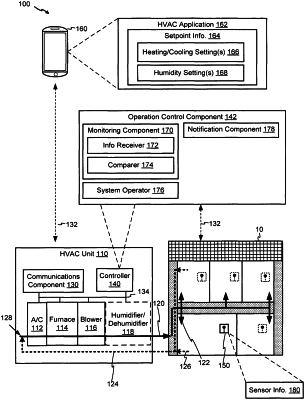| CPC F24D 19/1084 (2013.01) [F24F 11/30 (2018.01); F23N 3/082 (2013.01); F23N 2223/08 (2020.01); G05B 2219/2614 (2013.01)] | 20 Claims |

|
1. A heating, ventilation, and air conditioning (HVAC) system, comprising:
a burner configured to generate a combustion airflow;
a heat exchanger comprising a tube configured to direct the combustion airflow therethrough and place the combustion airflow in a heat exchange relationship with a supply airflow directed across the tube of the heat exchanger;
an inducer motor configured to draw the combustion airflow through the tube of the heat exchanger;
a pressure sensor configured to measure an output airflow pressure of the combustion airflow drawn through the tube of the heat exchanger via the inducer motor;
a memory; and
a processor coupled with the memory and configured to:
initiate the burner and the inducer motor within the HVAC system to provide the combustion airflow through the tube of the heat exchanger;
establish an initial pulse width modulation (PWM) signal sent to the inducer motor as a baseline PWM signal, wherein the initial PWM signal corresponds to a predetermined airflow pressure of the combustion airflow drawn through the tube of the heat exchanger via the inducer motor;
send a PWM signal to the inducer motor associated with a monitored output airflow pressure of the combustion airflow;
compare the PWM signal to the baseline PWM signal in response to the monitored output airflow pressure of the combustion airflow reaching the predetermined airflow pressure of the combustion airflow;
control the inducer motor based on a comparison of the PWM signal and the baseline PWM signal; and
generate a status notification of the combustion airflow drawn through the tube of the heat exchanger in response to the comparison of the PWM signal and the baseline PWM signal.
|